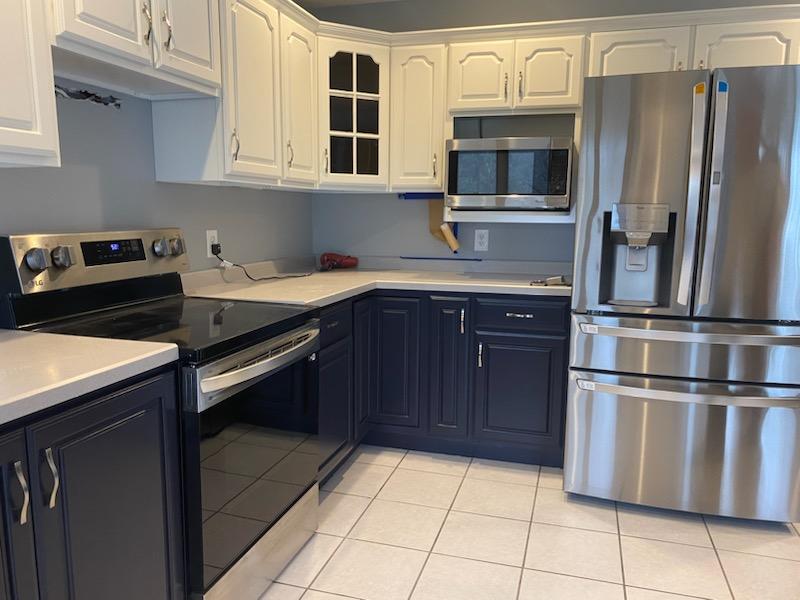
How To Paint Stained Cabinets
Introduction
Painting stained cabinets might sound like a daunting task, but it doesn’t have to be. With the right tools and techniques, you can give your kitchen or bathroom a fresh, modern look without the need to replace your cabinets. This guide will walk you through everything you need to know—from prep work to the final coat—to ensure your painted cabinets look professional and last for years.
1. Can You Paint Over Stained Cabinets?
Yes, you absolutely can paint over stained cabinets! The trick is in the preparation. Stained wood has a smooth finish that doesn’t naturally hold onto paint, so it’s important to prep the surface correctly before you start.
Here’s what you’ll need to do:
Clean the cabinets thoroughly to remove any grease or dirt.
Use sandpaper or a liquid deglosser to rough up the surface slightly.
Apply a high-quality primer designed for stained or dark wood.
Skipping these steps might leave you with peeling paint later, so it’s worth putting in the effort upfront.
2. Prepping Your Cabinets for Painting
Preparation is the most important step in this process, and it’s where many DIY painters go wrong. Follow these steps to set yourself up for success:
Clean Thoroughly: Use a degreasing cleaner to remove built-up grease and grime. This is especially important for kitchen cabinets.
Sanding (or Not): Sanding gives the surface some "tooth" for the paint to grip onto. If sanding sounds like too much work, a liquid deglosser can achieve similar results.
Priming: A good primer is your best friend when painting stained cabinets. It blocks the stain from bleeding through and ensures your paint adheres properly. Choose one designed for stained or glossy surfaces for the best results.
A little extra effort here saves you from headaches later on.
3. Choosing the Right Paint for Stained Cabinets
The type of paint you choose will make or break your project. For cabinets, durability and easy cleaning are key. Here’s what to look for:
Cabinet-Specific Paints: Many brands now offer paints specifically formulated for cabinets. These are durable and resistant to chips and scratches.
Finish Matters: Semi-gloss or satin finishes are the most popular for cabinets. They’re easy to clean and have just enough sheen to make your cabinets pop.
Stick with high-quality paints, even if they cost a little more upfront—they’ll save you time and effort in the long run.
4. Painting Techniques for a Professional Look
Now it’s time to paint! Here are some tips to make sure your cabinets turn out looking great:
Use the Right Tools: A foam roller is ideal for flat surfaces, while an angled brush works best for edges and corners.
Apply Thin, Even Coats: Don’t try to cover everything in one go. Multiple thin coats will give you a smoother, more durable finish.
Let it Dry: Be patient! Let each coat dry completely before applying the next. This ensures a professional, streak-free finish.
5. Final Touches and Maintenance
After all that hard work, don’t forget the finishing touches. Reinstall your hardware, or upgrade to new knobs and pulls for an extra polished look. To keep your cabinets looking fresh:
Wipe them down regularly with a non-abrasive cleaner.
Touch up any nicks or chips as they happen to prevent further damage.
Proper maintenance will help your cabinets stay beautiful for years to come.
Conclusion
Painting stained cabinets is an affordable way to transform your space without the hassle of replacing them. With the right prep, paint, and techniques, you can achieve a stunning, professional-looking finish. Ready to get started? Contact Rockford Painting Pros today!
